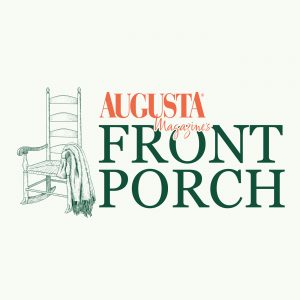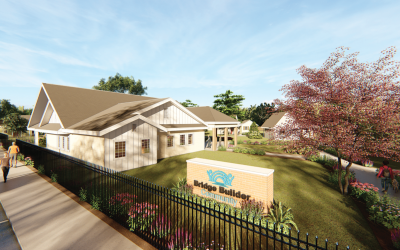Remember when you were a kid and you intertwined your fingers of both hands downward and recited to someone: “This is the church, and this is the steeple.”
Then you would point your two index fingers skyward to touch forming the “steeple.”
Next, you would put your fingers back downward and say, “Open the doors, and see all the people.” And then you would turn your hands over and spread your fingers and show all of the “people.”
For thousands of years all over the world, steeples have gone together with churches like motor boats on lakes or Ferris wheels at fairgrounds.
You rarely see one without the other.
The downtown Augusta area is blessed with many historic churches; each having their unique steeple. You probably have passed these very familiar sacred places hundreds or even thousands of times.

SACRED HEART CULTURAL CENTER, Thirteenth and Greene streets: Sacred Heart began in 1874 when Catholic priest Theodore Butler bought a home and lot for $10,000. The 15 styles of bricks for the present building came from a factory in Hamburg, S.C., just across the Savannah River. The church lasted as a congregation from its first service on December 2, 1900, until its last mass on July 3, 1971. It was abandoned for 16 years until saved by local businessman Peter S. Knox Jr. It reopened after extensive renovations in 1987 as Sacred Heart Cultural Center.

TRINITY C.M.E, Eighth and Taylor streets: The former Trinity Christian Methodist Episcopal Church existed at the corner of Eighth and Taylor Streets for more than 125 years. It was moved in 2018 to its new location a few hundred yards away thanks to the Augusta Canal Authority and Hercules House Movers, Inc. The church was established in 1840 by African American members of the Saint John United Methodist Church. Plans considered for the empty church building include becoming a community center, historic museum, arts venue and/or Augusta Canal trail head. Among the former members of Trinity was Channing H. Tobias, a Paine College graduate and faculty member, who in 1953 became head of the National Association for the Advancement of Colored People, the nation’s oldest and largest civil rights organization.

SPRINGFIELD BAPTIST, Twelfth and Reynolds streets: This church was founded in 1787 by a large group of former slaves on the Galphin Plantation at Silver Bluff, S.C. The older, rear building attached to the present sanctuary was bought in 1844 (as Asbury Chapel) from St. John Methodist Church and moved several blocks to Reynolds Street. It was constructed in 1801 and survives today as one of Georgia’s oldest church structures. The Augusta Baptist Institute was founded in 1867 in Springfield Baptist before moving to Atlanta and becoming Morehouse College. The Georgia Equal Rights Association was founded in Springfield in 1866 which evolved into Georgia’s Republican Party.

ST. JAMES UNITED METHODIST, 439 Greene Street: The roots of this church began in 1778 with Methodism founded in Augusta. It was an outgrowth of St. John and named in honor of its founder, The Reverend James E. Evans. Construction of this building began in 1855. The Cenotaph monument in front of this church in the middle of Greene was dedicated on December 31, 1873, listing members of St. James who died in the Civil War. The church was enlarged in 1886 with the belfry added. U.S Presidents who have worshipped in this building have included William Howard Taft in 1910 and Dwight David Eisenhower in 1954.

ST PAUL’S CHURCH, Sixth and Reynolds streets: This is the fourth building on the property with the present structure completed after the fire in March of 1916. Its graveyard includes many noted citizens including Robert Forsyth, the first federal law enforcement officer killed in the United States; Ambrose Gordon, the great-grandfather of Girl Scouts of the U.S.A. founder Juliette Gordon Low; William Few, one of Georgia’s two signers of the U.S. Constitution, and George Steptoe Washington, administrator of the will of his uncle, U.S. President George Washington.

ST. JOHN UNITED METHODIST, 736 Greene Street: This historic church was established in 1798 by Stith Mead, a former circuit riding preacher banned from the St. Paul’s pulpit for criticizing Augustans lack of religion. Mead paid $500 for the Greene Street lot on which the church still stands. The present brick sanctuary was built in 1844 by William Goodrich. The old meeting house constructed in 1801 was rolled on logs to Reynolds and Twelfth streets to become the sanctuary for Springfield Baptist Church. The sanctuary of St. John was expanded in the 1890’s with the stained glass windows added at that time. It was restored in 1998 for the church’s bicentennial to its 19th-century appearance.

MOST HOLY TRINITY CATHOLIC CHURCH, Telfair at Eighth streets: The church web site notes that the plans and drawings were donated by John Rudolph Niernsee, head of the Baltimore & Ohio Railroad who also designed the State House in Columbia, S.C. The cornerstone was laid July 19, 1857 and the building was consecrated April 12, 1863. Smith & Crane Carvers of New York was the building’s contractor. The brick work was by Hitchcock and Ingalls of Augusta. The iron columns of the interior and the cross on the front of the church were manufactured at the foundry of John MacMurphy. The marble altars were created in Baltimore, Maryland, by John P. Mullen. The bell donated by the Dorr family in 1894 prompted the completion of the bell tower and spire.

THANKFUL BAPTIST, Walker at Third streets: This church, built in 1909 in the heart of Augusta, in August of 2015 celebrated its 175th anniversary. This is the second oldest African American Baptist Church in Augusta (after Springfield Baptist) and one of the oldest in the nation. Its former active members included world famous singer Arthur Lee Simpkins, one of the first black performers on network television, who sang at the 1952 Democratic national convention and also in London for the coronation celebrations of Queen Elizabeth II. His recording of the Joyce Kilmer poem “Trees” was an international hit single.

UNITED HOUSE OF PRAYER FOR ALL PEOPLE, 1269 Wrightsboro Road: It was Bishop Charles Manuel “Daddy” Grace who founded this Christian outreach organization in 1919 based on the biblical verses Isaiah 56:7 and Matthew 21:13 of which Jesus says his house shall be called “a house of prayer for all people.” Augusta HOP pastor of more than 17 years, C.M. Bailey, now is the nationwide leader of more than 140 United House of Prayer For All People churches in nearly 30 states. The HOP operates a daily cafeteria of soul food called “Madison’s Kitchen, named after a former HOP bishop, open to the public and a residential rental complex called “Bailey Place Village.”

ST. LUKE UNITED METHODIST, 309 Crawford Avenue at the Calhoun Expressway Exit: This is one of the few Augusta churches taking its name from the street where it was located. The congregation began with evangelist Miller Willis in the early 1870s. It was St. Luke’s first pastor, Caleb W. Key, who in 1875 moved the congregation into a wooden building on the present site. The current building dating from 1883 suffered a major fire on December 28, 2016, due to faulty electrical wiring. But with the building’s insurance and major contributions from local citizens of many denominations the church reopened its historic home on January 6, 2019, offering its many outreach programs to the Harrisburg neighborhood.

TABERNACLE BAPTIST, 1223 Laney-Walker Boulevard: This church as established in 1885 by its founder and first pastor, The Rev. Charles T. Walker, half namesake of Laney-Walker Boulevard. The present building was constructed by 1915 with a sanctuary that can seat more than 2,000. Famous visitors have included educator Booker T. Washington, multi-millionaire John D. Rockefeller and U.S. President William Howard Taft.

FIRST CHRISTIAN, Greene at Seventh streets: Emily Tubman, a Kentucky native and charter member of the First Christian Church of Augusta, provided funds for the building of scores of Christian Churches throughout Georgia including this one in Augusta as well as others in Atlanta, Athens, Savannah and Sandersville. She not only paid for the buildings but also for the pastor’s salary. Her enormous wealth began with the inheritance when her husband, Richard, died in 1836. But she made many wise investments including being a major stockholder with the John P. King Manufacturing Co. (King Mill). She is known especially for freeing her slaves in 1837 after her husband died and paying for their passage to the African country of Liberia. One descendant became president of the country. The monument to her on Greene Street in front of the church was dedicated in 1994.

GILBERT-LAMBUTH MEMORIAL CHAPEL, 1235 Fifteenth Street, Paine College Campus: This beautiful building holding about 1,200 persons was built in 1968. It is often described as the heart of the historic Paine College campus; used from multiple activities including a PBS-TV filmed concert by world famous opera star Jessye Norman and a standing-room-only speech by U.S. Congresswoman Shirley Chisholm, the first woman to make a serious bid for the U.S. presidency. The chapel was named after Dr. John Wesley Gilbert, the first Paine student and graduate and first African American faculty member, and Bishop Walter Russell Lambuth, a doctor and theologian and Paine College trustee.

FIRST PRESBYTERIAN, Telfair at Seventh streets: The website of this church notes that “Thomas Jefferson was President of the United States and Lewis and Clark were exploring the newly purchased Louisiana Territory in 1804 when First Presbyterian Church was first organized in Augusta, Georgia.” The original wooden frame structure was designed by Robert Mills, who also designed the Washington Monument. The Reverend Joseph R. Wilson, father of U.S. President Woodrow Wilson, was pastor of the church from 1858 to 1870. Wilson’s memories of living in Augusta throughout the American Civil War have been studied extensively by historians. Many believe it was his experiences during that time which led Wilson to champion the League of Nations. The house where the family lived, across from what is now Bell Auditorium, is open to the public.
Appears in the January 2020 issue of Augusta Magazine.






